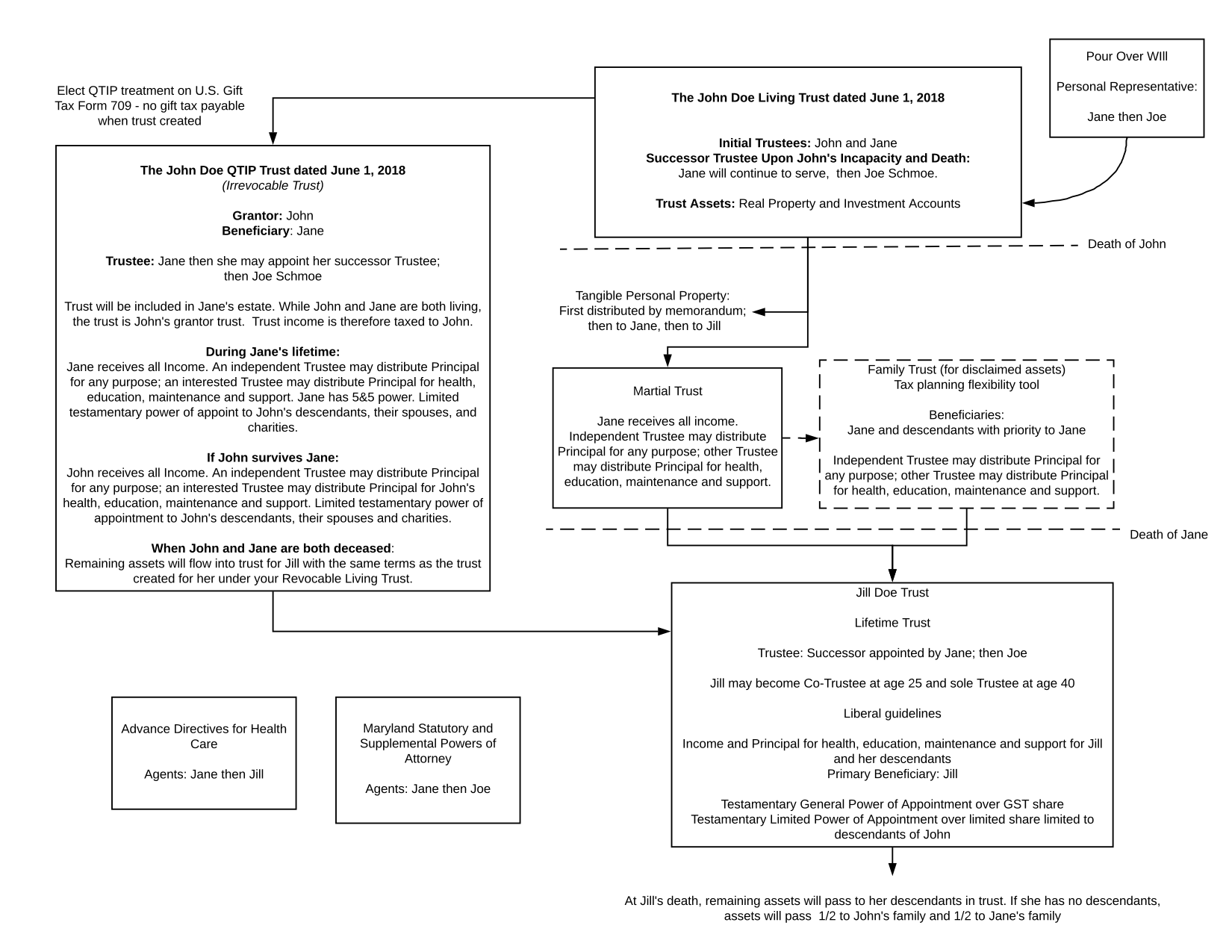
Holden & Campbell
Frank builds visuals to help clients digest the complex estate plans he creates. He calls them "diagrams worth a thousand words"—because these visuals are what clients actually understand.
Key benefits
- PROVIDE CLARITY
- Frank turns complicated, dense estate plans into simple, one-page summaries to help clients to understand the plan he has created for them.
- PRESENT
- When clients come to review their estate plan, Frank projects his diagram on the screen and walks through the diagram with them to gather feedback and help them understand.
- DEVELOP TRUST
- The visuals help clients feel confident in Frank and his team and what they produce.
- STREAMLINE DIAGRAM CREATION
- Frank creates Lucidchart templates that he and his team can pull from instead of starting from scratch every time.
SIZE: Small (1-100 employees)
Holden & Campbell is a law firm focusing on estate planning and administration. They have helped thousands of families and businesses avoid complications that commonly occur at death without proper planning, such as dissension among heirs, misuse of resources, and unnecessary legal costs, taxes and delays.

We’ve seen countless customers use Lucidchart to explain their product or service and demonstrate the value it provides. Our latest customer chat proved this use case yet again—this time within the world of law.
Frank Campbell is a partner at Holden & Campbell, an estate planning law firm in Annapolis, Maryland. The services he and his team provide have helped thousands of families and businesses avoid complications that commonly occur at death without proper planning, such as dissension among heirs, misuse of resources, and unnecessary legal costs, taxes, and delays.
He creates estate plans for clients, which are complex documents involving many legal strategies such as wills, revocable living trusts, irrevocable trusts, durable powers of attorney, and healthcare documents. These plans outline how the estate is managed throughout a client’s life and after their death.
Typically, the estate plan is not something a client readily understands. And while clients don’t need to grasp all the intricate details, Frank does want them to have at least a high-level understanding of the plan he creates for them.
Relying on diagrams
This need for clarity is why you’ll find Frank in Lucidchart several times a week. The diagramming platform allows him to condense a complicated, dense estate plan into a simple, one-page summary.
After meeting with a client, Frank compiles the various documents (such as wills, health care, etc.), creates the estate plan, and then builds a summary in Lucidchart. He then prints the diagram and includes it in the estate plan documentation.

More importantly, the diagram is the first thing a client sees when they walk into Frank’s office to review the estate plan. It is projected on the whiteboard and guides the rest of the meeting. Frank explains:
“We summarize the plan using the diagram, and then we show a client where our documents do what the diagram says. Because the diagram they understand—the documents they don't.”
Blank spots on the diagram indicate areas where Frank needs the client’s input, such as the age the trust will be distributed to a client’s children or the name of the person they’d like appointed guardian.
Frank can cross-reference the document and diagram to enhance understanding. “It gives the client a great visual,” says Frank. “I'll open up the document and tell them, ‘Okay, you see here on the diagram where it gets divided?’ Then I'll point to the document and say, ‘That's the division. See how we got that?’”
Diagrams literally worth a thousand words
According to Frank, the value of these diagrams is being able to give a client a visual quickly and simply.
“I guess the concept is a picture is worth a thousand words. That's literally what we're doing. We have a thousand words written, but the picture is what the client will understand because if I tell them that, when they pass away, their assets are divided between a marital trust and a family trust, they don’t get what that means. But when they see the picture, that explanation comes to life.”
While big fans of that saying, we have never been able to take it quite so literally—and we love that now we can.
These visuals help clients feel confident in Frank and his team. “Clients develop a level of confidence in this huge volume of words that they're not all going to read. They know the main points are covered just the way they want them.”

Frank has turned building diagrams into a streamlined process by creating templates in Lucidchart that he and his team can pull from rather than starting from scratch—saving time and headaches.
And whenever Frank sees someone trying to create a flowchart using a different application such as PowerPoint, he’s quick to correct them: “No, no, no—Lucidchart is so much easier.”
These diagrams have become somewhat of a legend. Frank says:
“Clients love our diagrams. We almost have a reputation. People are like, ‘Oh, we heard about your whiteboard diagram.’ People know about them."
Now we’ve heard about them too, and we 100% understand the well-deserved hype.